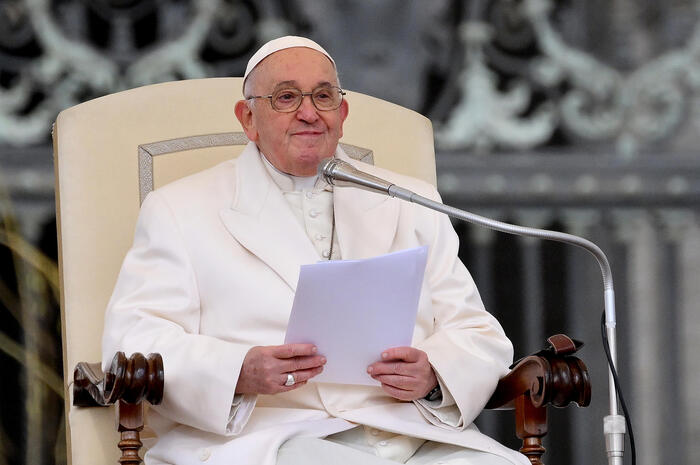The study of the biblical text, and its historical and philological background, in a non-denominational way is one of the great contributions of the so-called "science of religions" (or "religious studies", if Anglo-Saxon terminology is preferred to German) .
It was the great 19th century that paved the way for comparative linguistics, literature and mythology, with emblematic figures such as Bopp and the Indo-Germanists, the folklorists –from the Grimms to Afanasiev and Propp– and the scholars of myth and religion who followed the almost bicentennial path that goes back to Max Müller.
This was increased when it converged with the works of Protestant theologians, such as Tischendorf, who began to work on the text of the New Testament with the tools of the "science of antiquity", that is, the classical philology of Germanic roots.
A) Yes,
From this moment on, in countries with this tradition, the scientific study of the Bible was increasingly in the hands of scholars versed in the historical-critical method and in philological techniques.
Notable editions of the Hebrew text of the Old Testament and the Greek of the New were achieved, such as the Nestle-Aland edition, which has become a reference today.
And it is that behind the text of the Bible there is a great story: among many others, that of its writing, its composition, its context, its transmission, its interpretations, its archaeological and literary background and its ideological use since ancient times.
In addition, in the case of the Gospels —perhaps the most influential writings in history—, they must be framed in the history of Greek literature, in the corpus that they form with texts such as the letters of Paul or the Acts of the Apostles.
Regardless of the beliefs of each one, the importance of these key texts of our culture is beyond any doubt —it can be said that the Western world is culturally Christian— and its historical and literary knowledge, unfortunately, is not as widespread as it should be, nor has it been approached, most of the time, impartially and scientifically.
That is why we are in luck for the publication of a monumental edition (more than 1,600 pages) of the 27 books of the New Testament, in a version coordinated by Antonio Piñero, without a doubt our most recognized expert in New Testament philology.
If there are not many philologists who deal with these texts from a strictly historical-cultural point of view, there are even fewer critical editions that present them in a non-denominational interpretation designed for an educated public.
Nothing similar, I think, exists in Italian and French nor, in a single volume, in English or German, despite the fact that there are abundant critical and historical-literary studies and commentaries.
The volume, exemplarily edited in Trotta by Piñero and his team (G. Del Cerro, G. Fontana, J. Montserrat and C. Padilla),
presents the New Testament corpus in a clear translation and accompanied by a broad exegesis, academic but accessible to the general reader, and a useful index of subjects: the introductory study accounts for the problems of the composition and transmission of these texts, their Judeo-Hellenistic context , the relationship with the historical Jesus, the complex pseudepigraphical authorship and much more.
Then each of the books is presented in an order that will be surprising to the reader accustomed to the confessional New Testament tradition, but that is justified by philological dating: first the seven Letters that are considered authentic of Paul - the oldest writings of Christianity (c. 50 AD)—then the Synoptic Gospels and Acts, the Deutero-Pauline Letters, Hebrews, St. John,
the Apocalypse and the community and universal Letters.
Each text has its own introduction, with special substance in the discussion of the Johannine writings (and their various attributions), with the case of the Apocalypse and its particular linguistic level, as well as the question of the authorship of Luke and Acts, among other topics. .
The New Testament is, basically, classical literature that clearly shows its connection with the purest patrimonial narration, with stories and archetypal characters of the hero myth and its key motifs.
But history and faith aside, this volume reminds us that the Gospels go much further: they are surely the best story ever written.
They bring together stories that are part of the basic arguments of humanity, between the mythological, the folkloric and the fictional (not in vain, the Acts coincide, temporally and schematically, with the birth of the novel genre).
Although the same thing happens in part with the Old Testament, a great and varied work of Hebrew literature that contains some of the most famous stories in history, the New is much more universalist and closer.
Let us not forget that it was composed in common Greek: it is, deep down, classical literature that clearly shows its connection with the purest patrimonial narration, with stories and archetypal characters of the myth of the hero (the traitor,
the helpers, the mother...) and their key motifs (the call, the ordeals, the return, the journey to the afterlife, redemption, etc.).
Interestingly, this complete edition coincides with another new literary and non-denominational translation of the Gospel of Matthew (the Editors' Office), published in a small and attractive bilingual volume and opportunely illustrated with frames by Pasolini.
This reminds us that the Jesus-Christ story—the “tale of stories,” with Basile's permission—contains a number of narrative universals: the hero who sacrifices himself for his community, the returning messiah-king, the one who will take his people to the kingdom of promise, the misunderstood prophet, the barren woman who gives birth, the virgin birth, the god who dies... In short, pure heritage narrative, between myth and wonderful story,
Our country, like others in its cultural sphere, traditionally left New Testament commentary and the study of theology in ecclesiastical universities in the hands of the Church (not so in Germany or the United Kingdom).
That is why we must celebrate this new academic and editorial impetus for biblical literature.
It coincides, not by chance, with the development, for the first time in our country, of university studies on religious sciences in the public university.
And it is that, finally, just last year the first degree in religious sciences in our history began at the Complutense, within an Institute of Religious Sciences with extensive postgraduate experience, for comparative study, global and non-denominational of religions.
look for it in your bookstore
You can follow BABELIA on
and
, or sign up here to receive
our weekly newsletter
.
Exclusive content for subscribers
read without limits
subscribe
I'm already a subscriber

/cloudfront-eu-central-1.images.arcpublishing.com/prisa/QVMNAZVITBFBPBKRIJF36WWEBU.jpg)










/cloudfront-eu-central-1.images.arcpublishing.com/prisa/KMEYMJKESBAZBE4MRBAM4TGHIQ.jpg)


